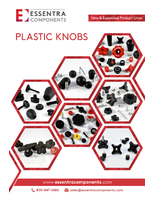ASTM details standards for snow skiing safety.
Press Release Summary:
ASTM International Committee F27 has created standards such as F1063 and F1064 that deal with ski/binding/boot systems. F27 has promulgated standards that promote ski safety by normalized dimensions and properties for skis and ski-boots, methods for testing ski equipment systems, rental and retail ski shop practices, recommended binding release values, and ski binding test devices. Since inception as Subcommittee F08.14, there has been a 50% decrease in overall incident/injury rate.
Original Press Release:
Standards Aid in Snow Skiing Safety
ASTM International Is an Important Resource
W. CONSHOHOCKEN, Pa., 6 April 2009 - ASTM International is a recognized resource for snow skiing safety. From technical standard like test methods and specifications to state-of-the-art research, documents offered by ASTM International guide much of the safety measures available in skiing today. A fact sheet on ASTM International and Ski Safety can be found at www.astm.org/skiing.html.
Snow Skiing Standards
ASTM International Committee F27 on Snow Skiing officially formed in 1982. The committee initially began as Subcommittee F08.14, under the jurisdiction of ASTM International Committee F08 on Sports Equipment and Facilities. The ASTM technical committee currently consists of more than 90 volunteer members from the United States, Canada, France, Austria and Bulgaria, who are involved in many different aspects of ski safety.
Jasper Shealy, professor emeritus, Rochester Institute of Technology, and vice chairman of Committee F27, says that F27 has promulgated standards that promote ski safety by normalized dimensions and properties for skis and ski-boots, methods for testing ski equipment systems, rental and retail ski shop practices, recommended binding release values and ski binding test devices.
"Each standard is the end result of science/evidence-based decision making that reflects the consensus of the relevant subcommittee," says Shealy. "In each instance, the standard was promulgated to address a known safety problem." Of particular note are two standards that deal with ski/binding/boot systems, F1063, Practice for Functional Inspections and Adjustments of Alpine Ski/Binding/Boot Systems, and F1064, Practice for Sampling and Inspection of Complete and Incomplete Alpine Ski/Binding/Boot Systems in Rental Applications.
Shealy notes that, since the committee's original inception as Subcommittee F08.14, there has been a 50% decrease in the overall incident/injury rate for skiing, and the incidence of mid-shaft tibial fractures, once the most common of all skiing injuries, has been reduced by more than 90% since the ASTM committee began to address this problem.
Committee F27 has developed 14 standards covering a variety of ski-related topics. The committee meets twice a year, with summer meetings that usually include workshops on ski injury statistics as well as advances in ski safety.
Ski Helmet Standard
ASTM F2040, Specification for Helmets Used for Recreational Snow Sports, is the primary standard to which many brands of ski helmets are tested. The standard was developed by Subcommittee F08.53 on Headgear and Helmets, part of ASTM International Committee F08 on Sports Equipment and Facilities.
Standards Aid in Snow Skiing Safety/Add one
"ASTM F2040 is a document that has resulted from years of research, testing and evaluation," says P.David Halstead, chair of Subcommittee F08.53 and lab director/research faculty, Sports Biomechanics Impact Research Laboratory, University of Tennessee, Knoxville. "Helmets compliant with this ASTM International standard are state-of-the-art for use on the slopes, affording the kind of performance that is winter snow sport-specific and are likely to reduce the risk of serious injury when worn appropriately."
Halstead also notes, "Subcommittee F08.53 is a vibrant and efficient group of over 160 members of whom approximately 60 meet twice each year." The subcommittee is made up of engineers, scientists, physicians, consumer advocates, protective headgear manufacturers and interested parties from many countries.
"Nearly all of the technical people on the subcommittee are world-recognized head injury experts in the areas of prevention, treatment, education and standards development," says Halstead.
Collection of Research in One Volume
Papers given at annual meetings sponsored by the International Society of Skiing Safety are published by ASTM International. These special technical papers report annually on technologically up-to-date research in all realms of skiing safety. The 17th volume of Skiing Trauma and Safety, published in March 2009, features 21 papers written by individuals from many disciplines, all of who are interested in snow sports safety. Some of the papers included are:
o Do Helmets Reduce Fatalities or Merely Alter the Patterns of Death?;
o Head Kinematics During Experimental Snowboard Falls: Implications for Snow Helmet Standards;
o Pediatric Head and Neck Injuries in Snow Sports: Evaluating the Influence of Helmets;
o Ski Bindings and Lower Leg Injuries; and
o Update on Injury Trends in Alpine Skiing.
ASTM International standards can be purchased from Customer Service (phone: 610-832-9585; service@astm.org) or at www.astm.org.
For technical Information, contact: (Committee F27) Jasper Shealy, Rochester Institute of Technology, Rochester N.Y. (phone: 585-271-6962; jeseie@rit.edu); (Subcommittee F08.53) David Halstead, University of Tennessee, Knoxville (phone: 865-523-1662; daveh@soimpact.com). Committee F08 meets May 19-21 during the May committee week in Vancouver, British Columbia, Canada. Committee F27 meets July 14-15 in Burlington, Vt.
ASTM International welcomes and encourages participation in the development of its standards. ASTM's open consensus process, using advanced Internet-based standards development tools, ensures worldwide access for all interested individuals. For more information on becoming an ASTM member, please contact Christine Sierk, ASTM International (phone: 610-832-9728; csierk@astm.org).
Established in 1898, ASTM International is one of the largest international standards development and delivery systems in the world. ASTM International meets the World Trade Organization (WTO) principles for the development of international standards: coherence, consensus, development dimension, effectiveness, impartiality, openness, relevance and transparency. ASTM standards are accepted and used in research and development, product testing, quality systems and commercial transactions around the globe.
Press Contact:
Barbara Schindler
610-832-9603
bschindl@astm.org




